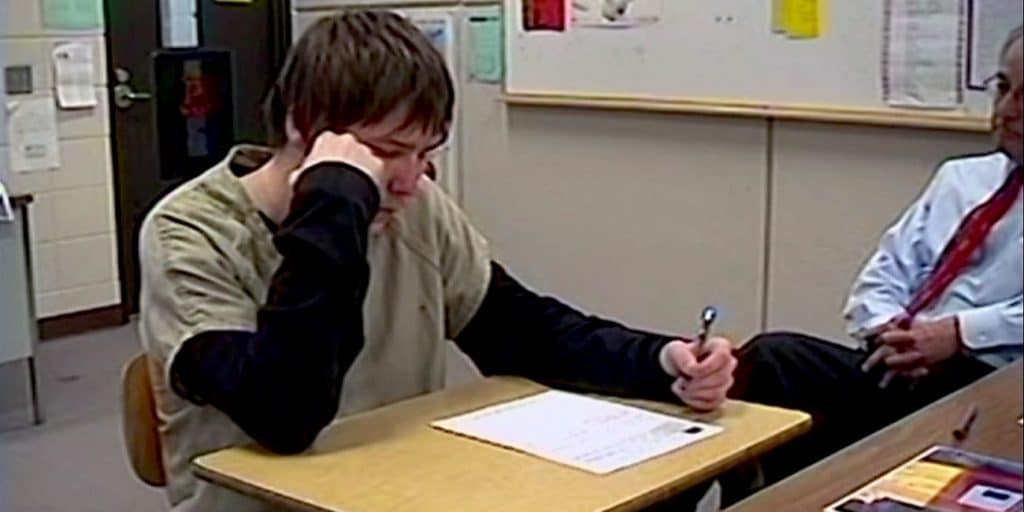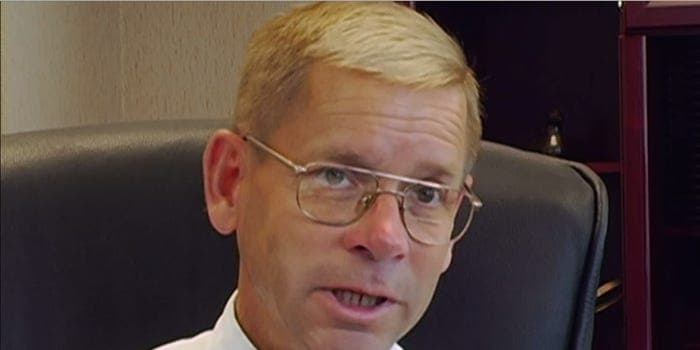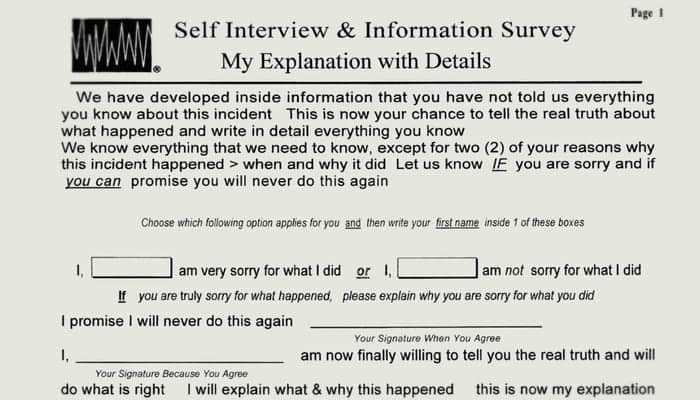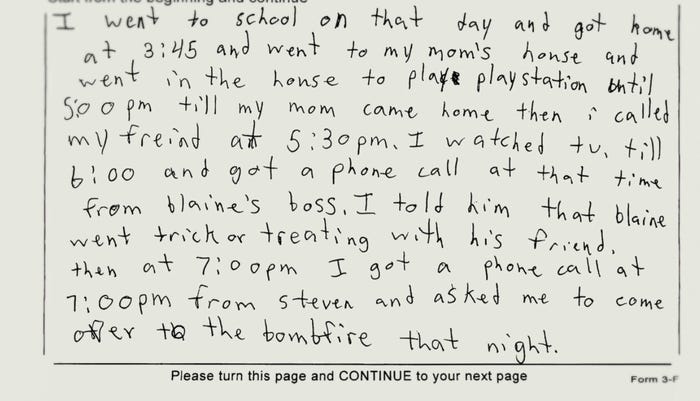
Netflix
“Making a Murderer” is officially a hit on Netflix for its portrayal of a murder in Wisconsin.
The 10-part documentary is harrowing to watch as it follows the murder of 25-year-old Teresa Halbach and her accused killers, Steven Avery and Brendan Dassey. It is filled with moments in which viewers may find themselves questioning the actions of the police officers, the evidence itself, and the justice system at large.
If you haven’t seen the 10-episode docuseries yet, you may want to stop reading and watch the full story first to avoid any spoilers.
One of the most shocking moments in the documentary is when Len Kachinsky, the newly appointed public defender for 16-year-old Dassey, sends his private investigator Michael O’Kelly to give Dassey a polygraph test as well as to get a written confession.
During this meeting, O’Kelly gives Dassey a form to fill out about his involvement in the crime. When Dassey writes a “confession” proclaiming his innocence, O’Kelly makes him rewrite his version of events and even goes so far as to make the learning-impaired teenager draw diagrams of the rape and murder, which are later used against him in his trial.

Screenshot
And while some viewers might argue it could be normal for a lawyer to need to understand the extent of his client’s involvement, Tech Insider spoke with two Wisconsin public defenders who say nothing about this document or the meeting was normal.
“I almost got physically ill when I saw that,” Kirk Obear, who has been a lawyer for 21 years and has been practicing in Wisconsin since 1999, told Tech Insider over the phone. “If it was designed to get Dassey’s perspective — a ‘let’s find out what you can tell us so we can get ready to defend you’ — then it wouldn’t have been set up like an interrogation.”

Netflix
Obear works in Sheboygan, a city in Wisconsin just south of Manitowoc, where most of the documentary takes place. He was colleagues with Avery’s defense lawyers Dean Strang and Jerry Buting but told Tech Insider he had no direct knowledge of the Avery/Dassey case and had never seen a form like the one Dassey was given until he watched “Making a Murderer.”
“I don’t know if you caught it, it’s fast, but there’s an option on the form that says, ‘Choose one: I am sorry, or I am not sorry,'” Obear said. “That’s not something you prepare if you help defend a client. It’s set up to psychologically manipulate this kid to fit with the prosecution’s theory. I don’t know if Kachinsky got on board with the prosecution, but what is apparent here from any objective observer’s perspective was there was never an intention by him to defend his client.”
Obear guesses O’Kelly created the form himself for the purpose of the Dassey interview. “There’s no form out there that’s a ‘sorry or not sorry?’ form,” he said.

Netflix
Steven R. Kohn is another criminal defense lawyer in Wisconsin who has been working for the past 38 years and who also knew Strang and Buting. After seeing “Making a Murderer,” he said, his initial reaction to the form O’Kelly made Dassey sign was, “What the hell is that, and what the hell is going on here?”
“I must say I have never seen a document used such as” that one, he said by email.
“The fundamental thing you don’t do as a criminal defense attorney is throw your client to the wolves,” Obear said. “The reason the prosecution got their hands on the Dassey document is because it got turned over to the prosecutors.”
“It’s just shocking,” he added.
Kachinsky has since spoken out after the documentary about the form. In a phone interview with TMZ, he acknowledged, “Well, that was just a piece of paper for our internal use. It wasn’t for use at trial.”
“We wanted to be sure we wouldn’t be wasting the police’s time,” he continued. “O’Kelly was a bit of a loose cannon I guess, but I guess the idea was to see if what Dassey was telling us was also what he was telling the police. Sometimes people will tell people different things.”